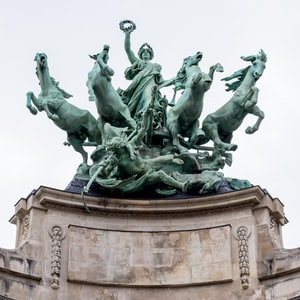Medieval Hungary: The Age of the Árpád Dynasty
7 min read
The 12 months 2022 marks the 800th anniversary of the issuance of the Golden Bull by King Andrew II. Issued at the 1222 Food plan held at Fehérvár, the Golden Bull is a person of the cornerstones of the medieval Hungarian constitutional system and its anniversary created a best prospect to organize a key exhibition focused to Hungary’s to start with ruling residence, the Árpád Dynasty. This sort of an exhibition has been planned for at minimum a 10 years and curators at the Hungarian Countrywide Museum have organized a proposal for a key exhibition with worldwide financial loans. In 2017 government help came, alongside with the conclusion that the exhibition should really be held at Székesfehérvár, to mark the anniversary of the Golden Bull and to inaugurate a recently renovated museum setting up belonging to the King Saint Stephen Museum. Curators have been appointed from equally institutions and the very long operate of securing loans and making ready a catalog was began. At the commencing of 2019 a new federal government-funded institution, the Institute of Hungarian Research started its functions. The Minister of Human Sources (in demand of cultural affairs) delegated this Institute to the consortium getting ready the exhibition. Perform continued and the scheduled date of opening was nearing - while the renovation of the Székesfehérvár museum constructing was not yet concluded.
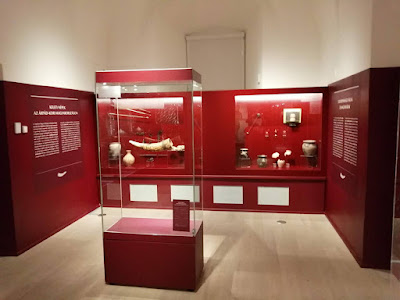 |
| Installation look at |
Then late in December of 2021, Miklós Kásler, Minister of Human Assets - in arrangement with the newly appointed director of the Hungarian Countrywide Museum, László L. Simon - declared in an e-mail that the appointment of the curators (Etele Kiss, Ágnes Ritoók, and Erika Simonyi of the Hungarian National Museum) is being withdrawn, and Miklós Makoldi of the Institute of Hungarian Investigate is appointed as the new curator of the exhibition. Building these kinds of a go three months right before the opening of a key exhibition is rather stunning even in Hungary and obviously, a scandal broke out. Provided the actuality that Miklós Makoldi, an archeologist devoid of a doctorate and any relevant museum-associated abilities was about to take over the success of a few many years of perform by a team of skilled museum curators, numerous scholars decided that they no longer would like to take part in this sort of a undertaking. In the finish, 25 scholars signed an open up letter, withdrawing their contributions from the catalog of the exhibition (which was presently nearing completion). In this condition, quite a few men and women doubted that the exhibition could be opened at all. In the conclusion, the exhibition - titled Kings and Saints, The Period of the Árpád Dynasty - opened on March 18, 2022, in a former monastery turned into a museum at Székesfehérvár. Due to the situation, on the other hand, the outcome amounts to a monumental missed possibility.
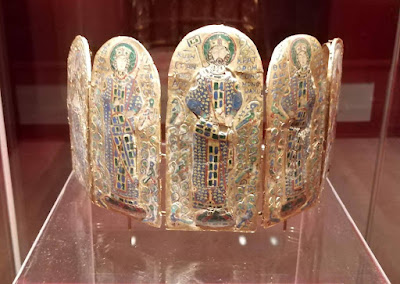 |
| The Monomachos Crown (Hungarian Nationwide Museum) |
Allow me clarify in depth. Makoldi, the new curator of the exhibition, had no opportunity or time to change the concept of the exhibition. He only modified a few rooms of the exhibition, largely to eliminate references to the non-Hungarian inhabitants of medieval Hungary (which include Carolingians and Slavs from the 1st area working with the Hungarian conquest and a chapter about Muslims, Jews, and different Jap nomadic folks residing in the Kingdom of Hungary). You can study the explanation of the Institute and see for on your own. In any circumstance, the new curator labored with the authentic synopsis and item listing - getting over other people’s work, if you will. On the other hand, the initial notion could not be understood. Quite a few essential loans did not make it to Székesfehérvár (the Cross of Adelheid from Lavantall is one particular these types of object described in the push, but there are many other folks). It is tough to convey to what function the scandal played in the circumstance of missing loans - I consider the location in Székesfehérvár might also have performed a purpose in this. Not the deal with itself, but the reality that the museum creating in Székesfehérvár was accomplished just a couple of months before the opening of the exhibition, so creditors could not verify that it is up to worldwide specifications essential for sensitive objects.
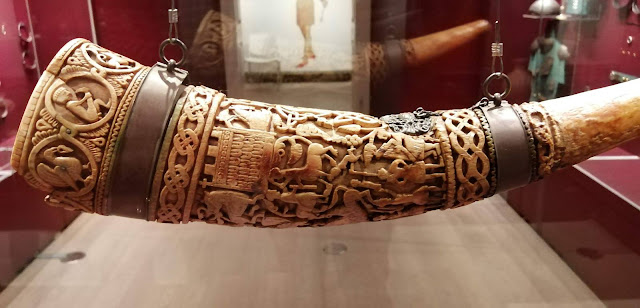 |
| Lehel’s horn from Jászberény |
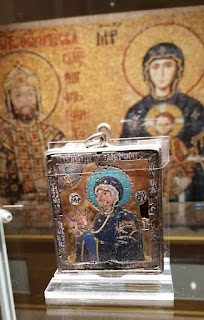 |
| Enklopion from Maastricht |
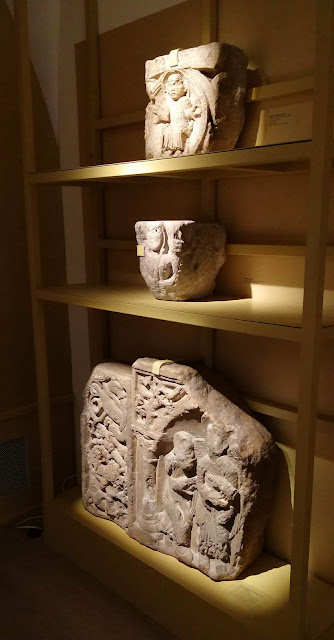 |
| A screen of stone carvings |
The exhibition also does not acquire benefit of being in Székesfehérvár. While there are references to the royal basilica committed to the Virgin - the coronation church and most significant burial position of Hungarian kings - the actual internet site of the church was shut at the time of my stop by (whilst supposedly it is open up each day from April 1st). The very critical Árpád-interval stone carvings from this church continue being largely inaccessible - a museum scheduled to grow to be their new property will open up only by the conclusion of the 12 months.
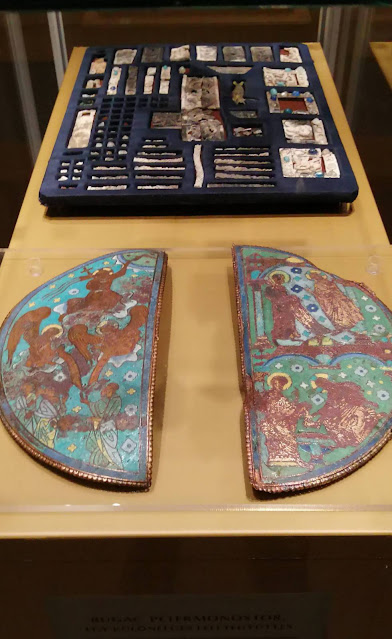 |
| Finds from Pétermonostora |
Additionally, it is evident that the new curator and his staff scrambled to place the exhibition jointly in the a few months at their disposal. As there is no record of the exhibition crew, it is hard to convey to who did what, but two months right after the opening day, the exhibition appeared fifty percent-finished. All the rooms are darkly lit (even rooms with stone carvings and goldsmith objects), the item labels are rather difficult to examine and some of them are even lacking. Some crucial objects are placed in darkish corners or near to the floor, or at the back of massive showcases. The greater exhibition graphics are unnecessary and terribly designed in standard: a area of the Bayeaux tapestry stands in to illustrate 11th-century battles in Hungary, the Legend of Saint Ladislas from the Hungarian Angevin Legendary was tailored to a graphic of a phony medieval stained glass window collection, some kings lifted from the 14th-century Illuminated Chronicle are mislabeled, and so on. There is no rationalization for the total lack of any info in English in the exhibition. There are some interactive online video screens - but no new content was developed for them, they simply just display films recycled from other venues and exhibitions. Of class, there is no catalog in any language or any publication in any respect, because of to the deficiency of authors (see above). All this makes it impossible to achieve any kind of global impact with the exhibition All this in spite of the 506 million HUF (about 1,3 million euros) budget from authorities support devoted to the exhibition. A skipped chance, without a doubt.
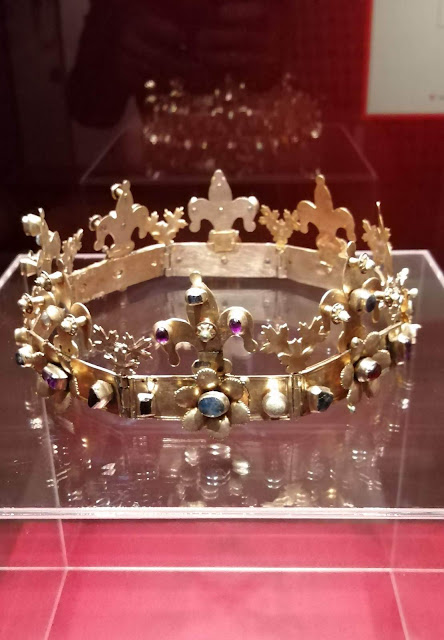 |
| 13th-century crown from Margaret Island, HNM |
Inspite of these significant shortcomings, do check out the exhibition if you get a prospect. Objects that are otherwise challenging to see and some highlights are unquestionably truly worth a pay a visit to. The initial concept of the exhibition can nevertheless be followed (as extensive as you go through Hungarian…) and Székesfehérvár is only about 45 minutes from Budapest by prepare. The exhibition will be on see until June 15, 2022.
 |
| Fragments from the tomb of Queen Gertrude, from Pilis Abbey |
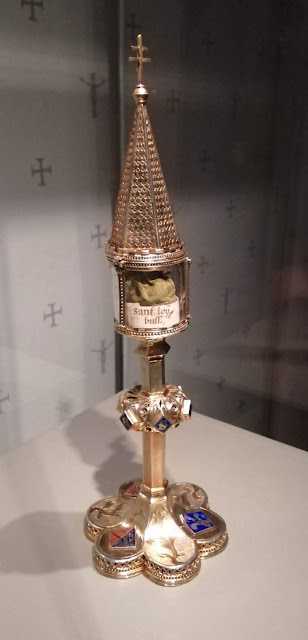 |
| 14th-century reliquary of St. Stephen from Aachen |
(shots my possess, taken with permission)




